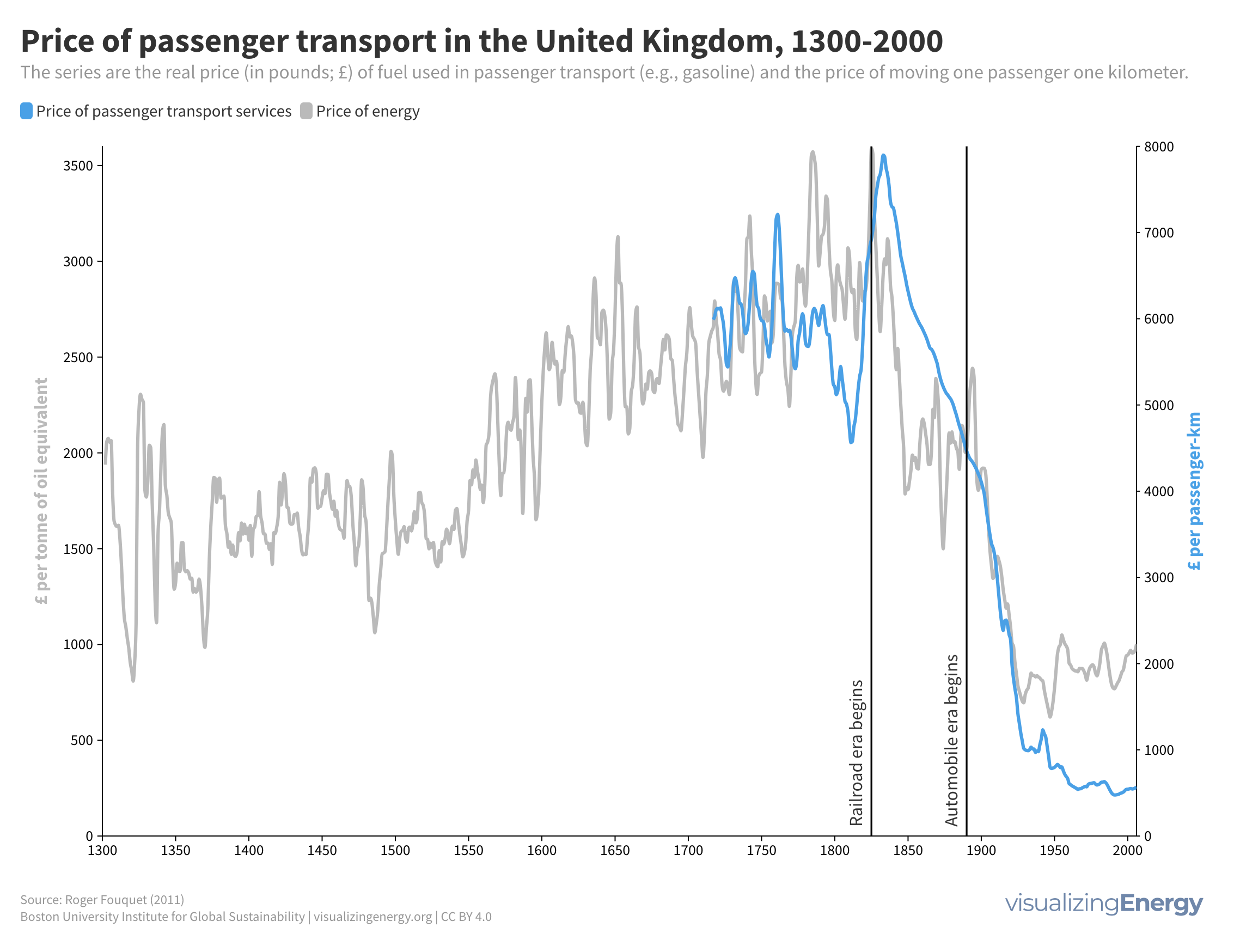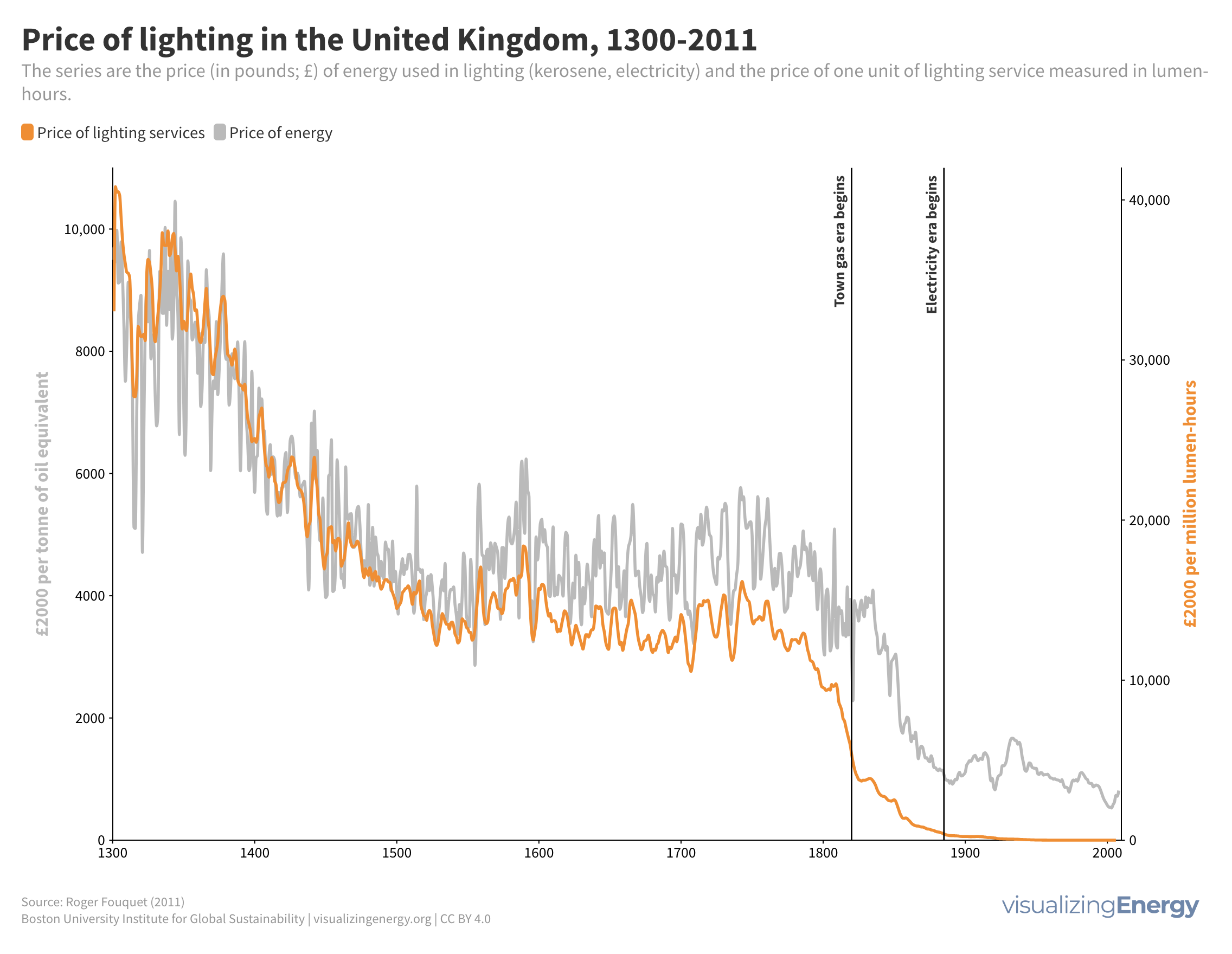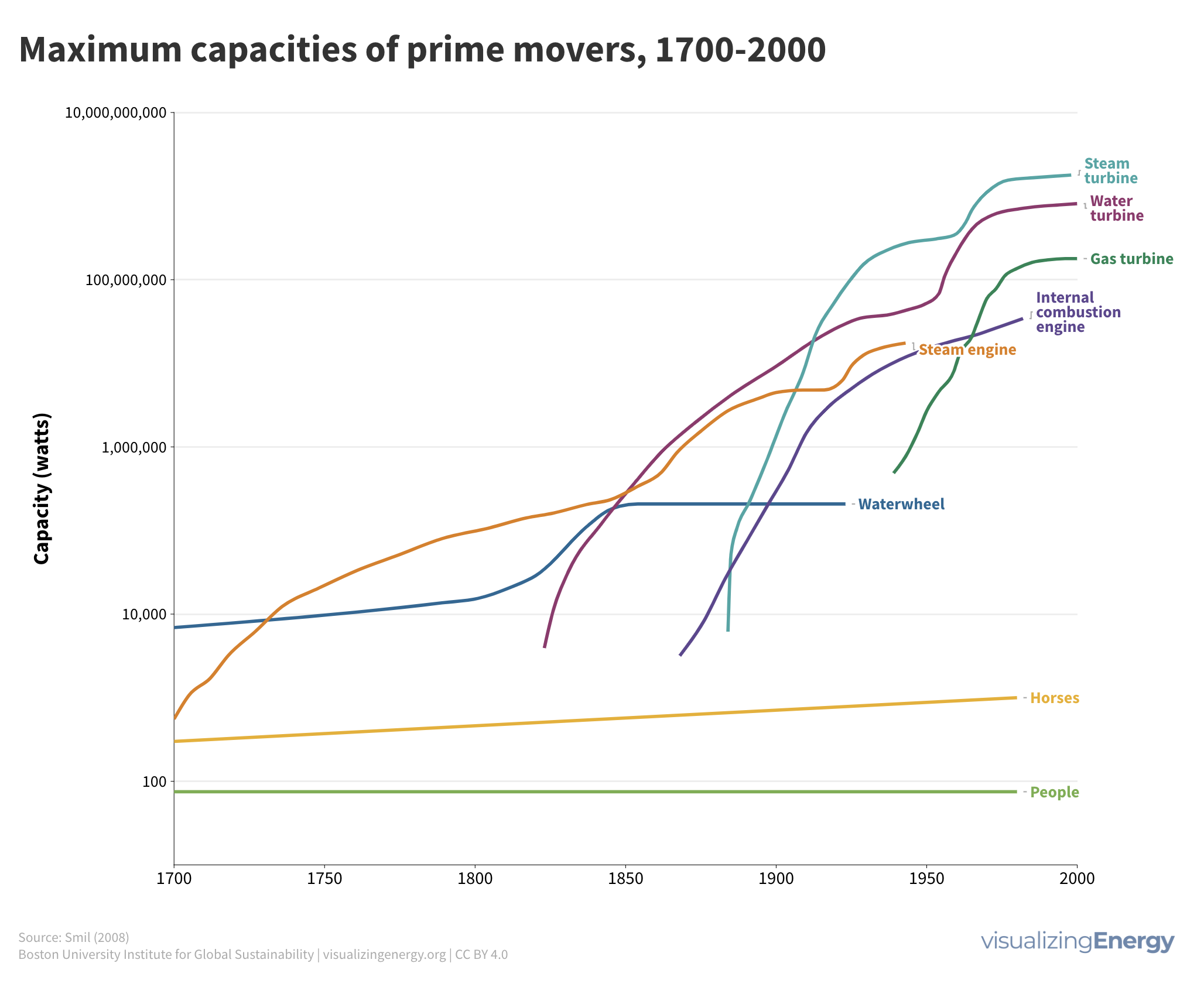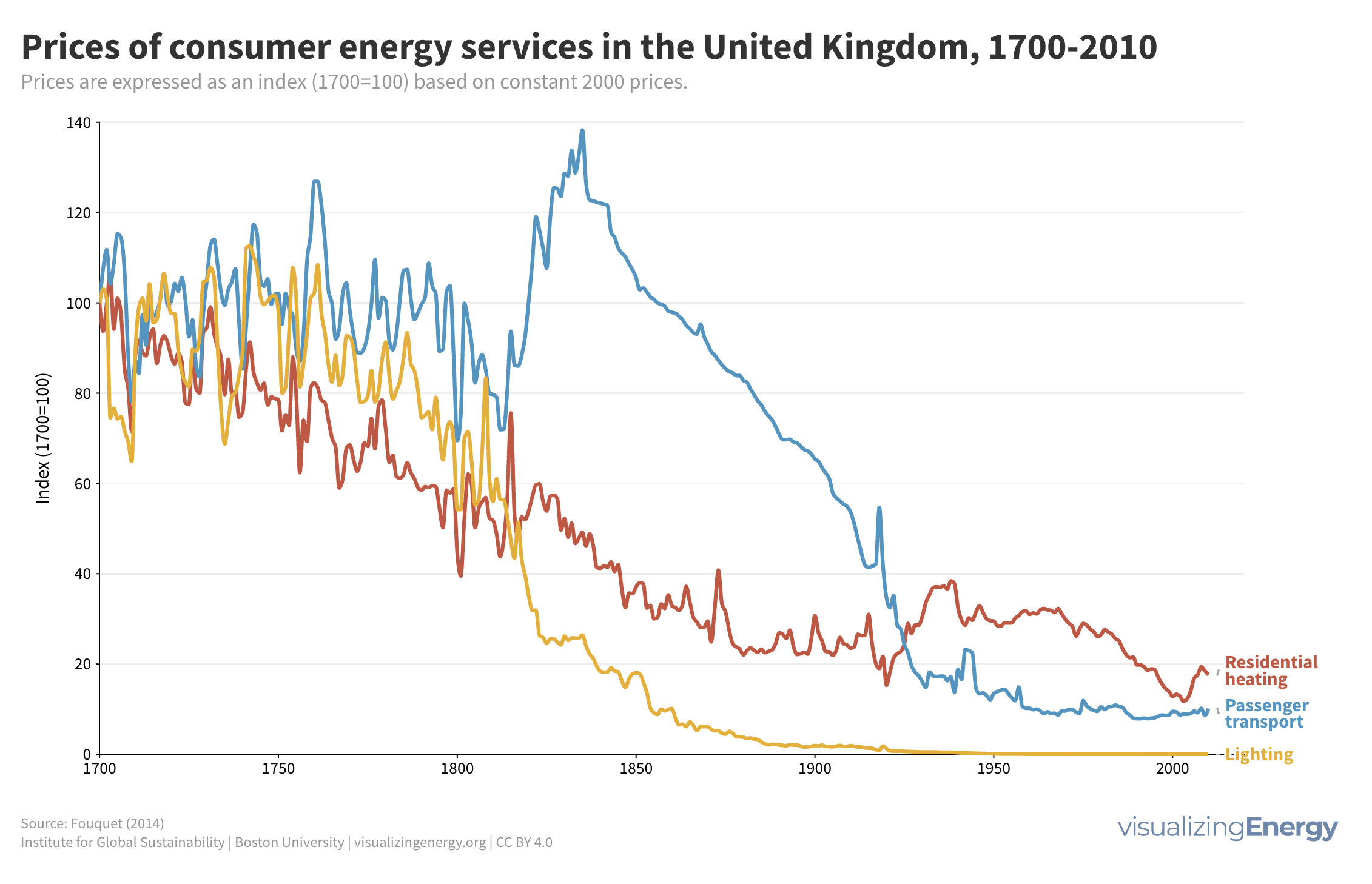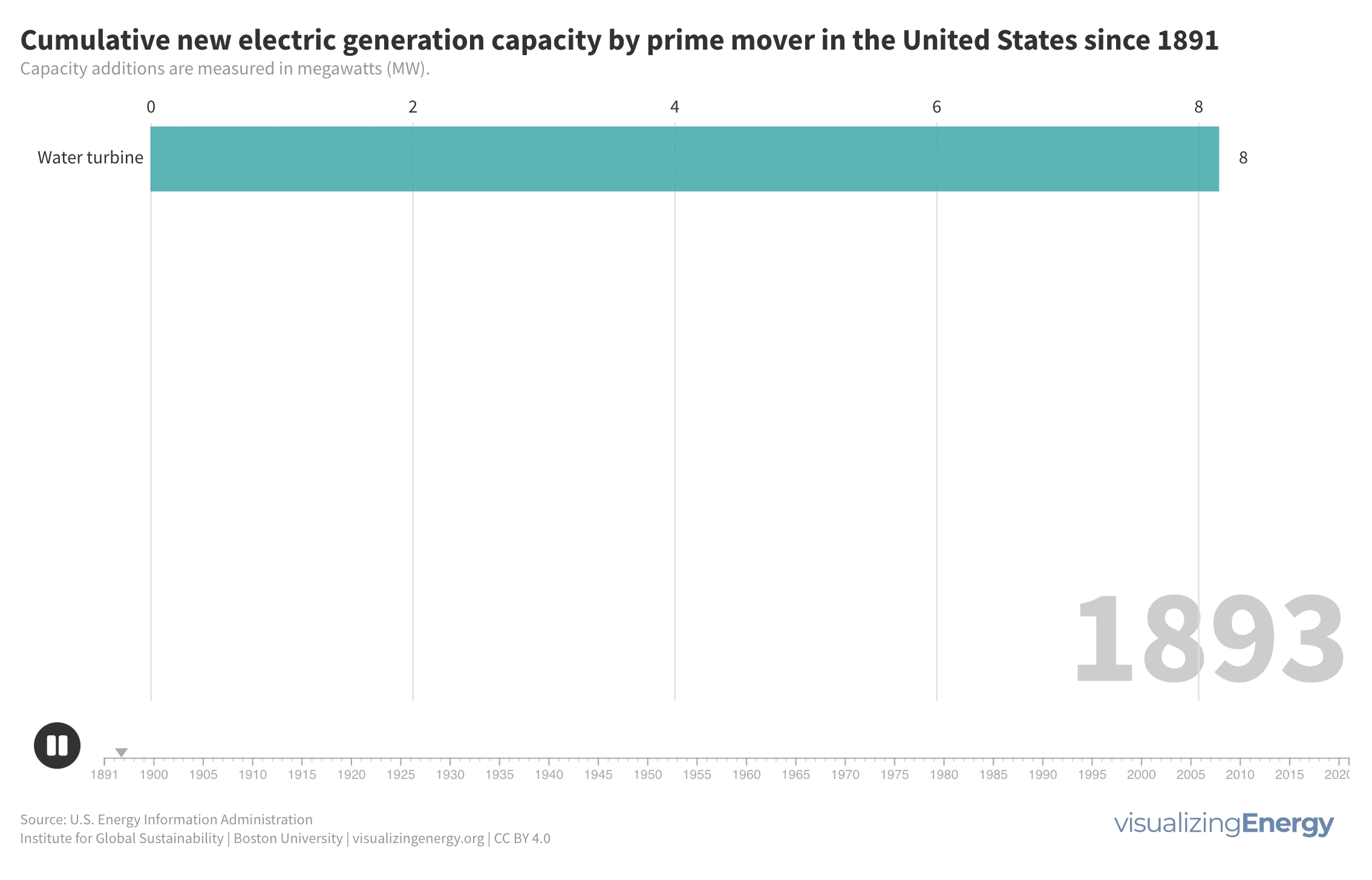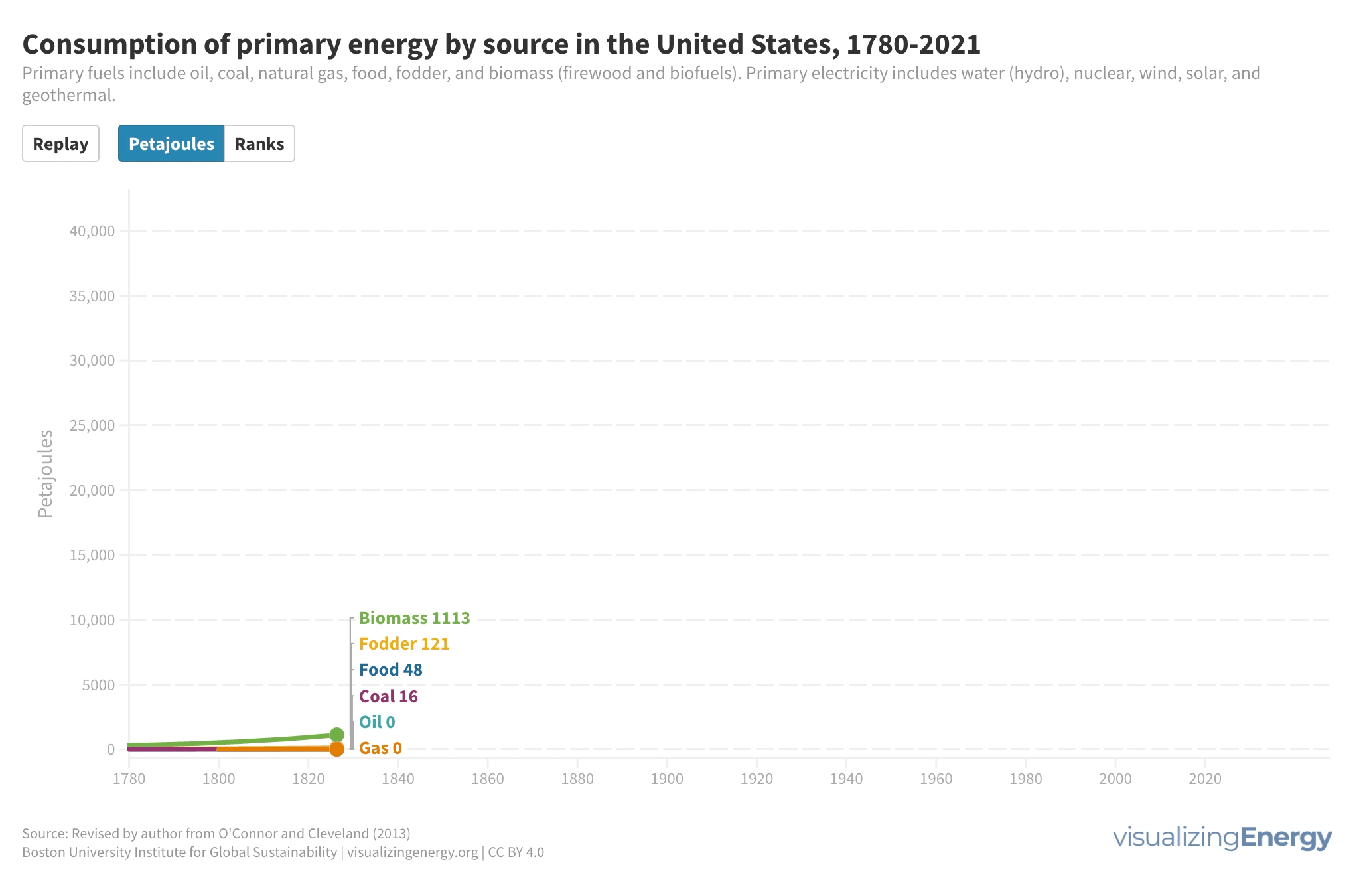
How did people benefit from energy transitions in the United Kingdom?
Historic energy transitions, primarily driven by fossil fuels, significantly improved human well-being, measured through consumer surplus. In the UK, transitions from stagecoaches to railways to cars, and from candles to gaslight to electric lighting, substantially increased consumer surplus. However, these benefits diminish as societies reach high well-being levels.

